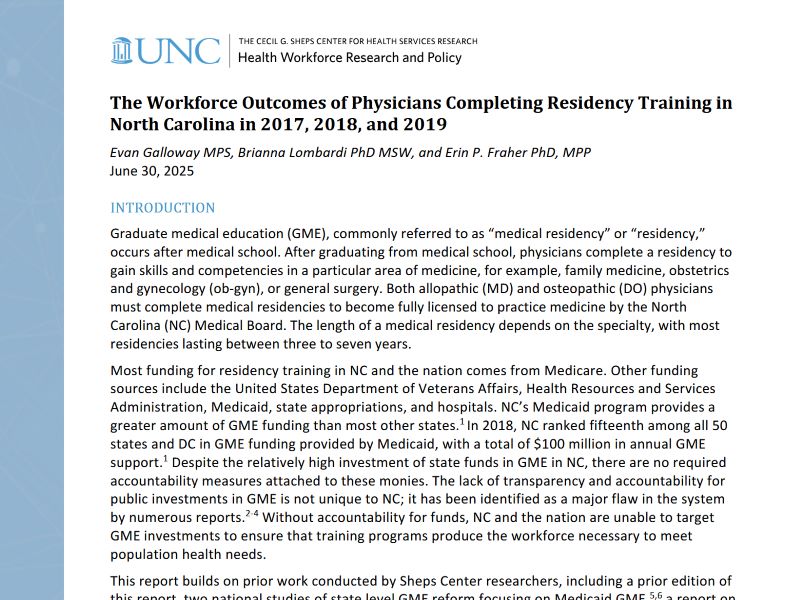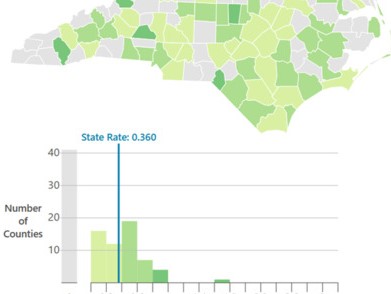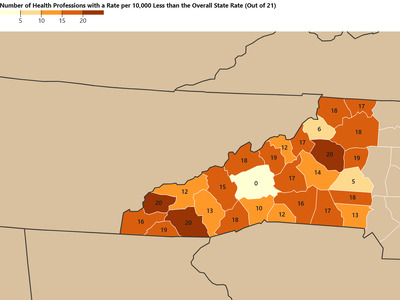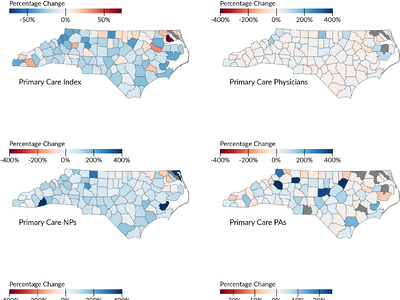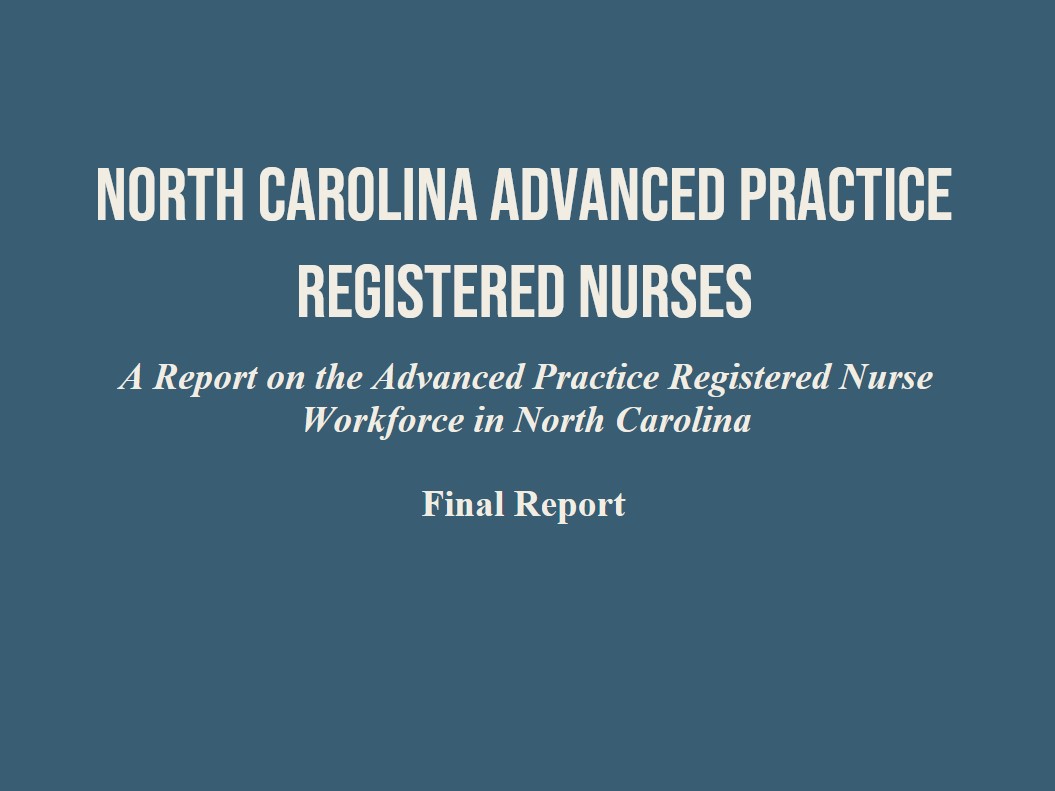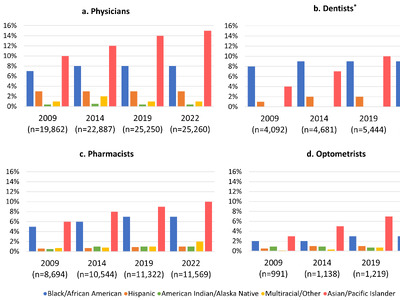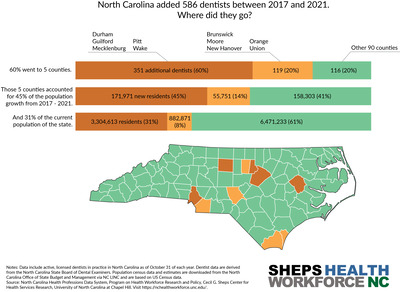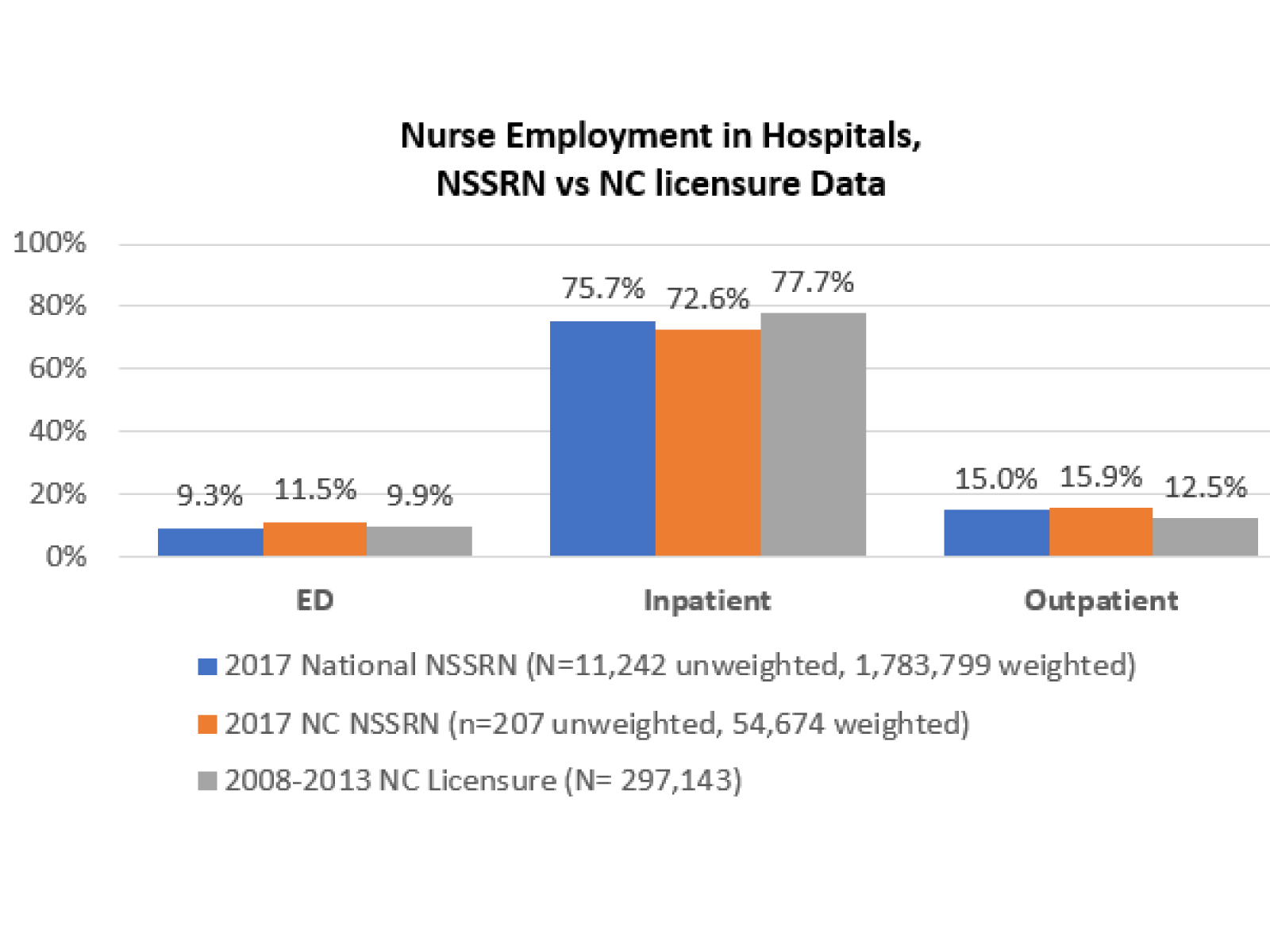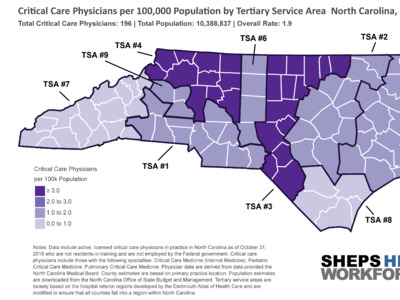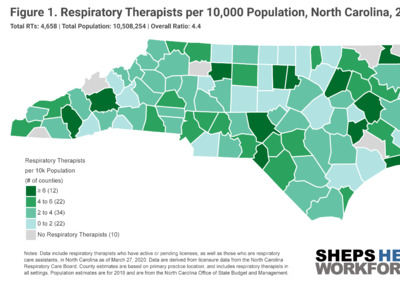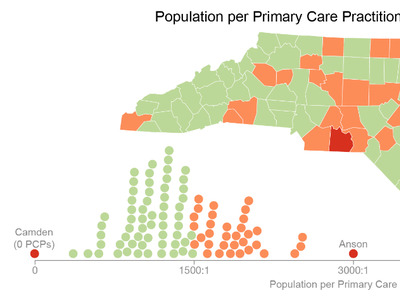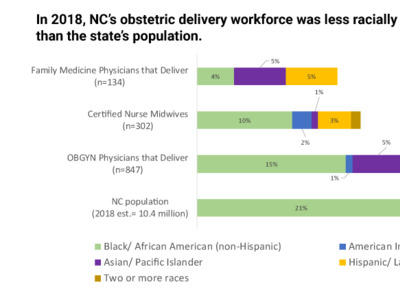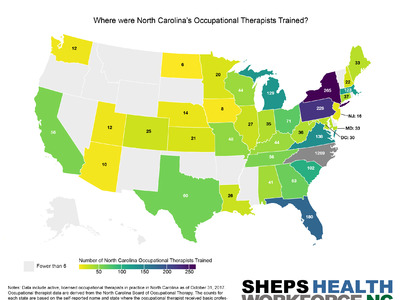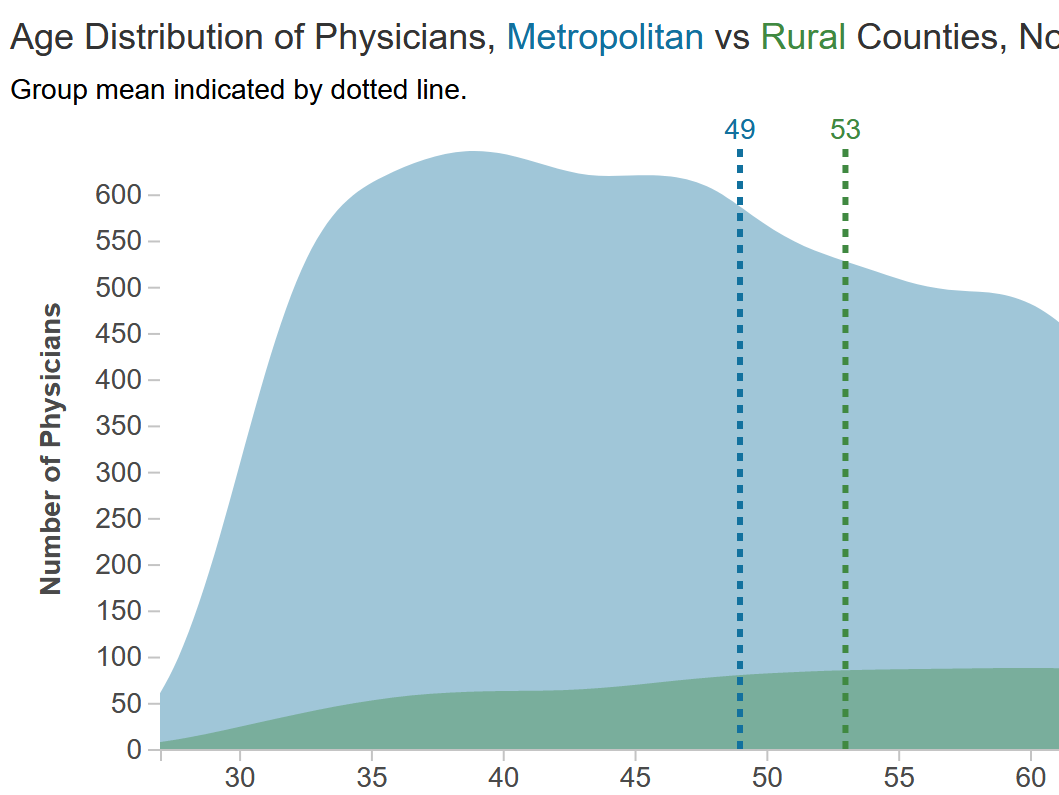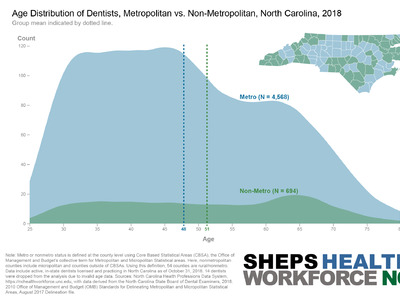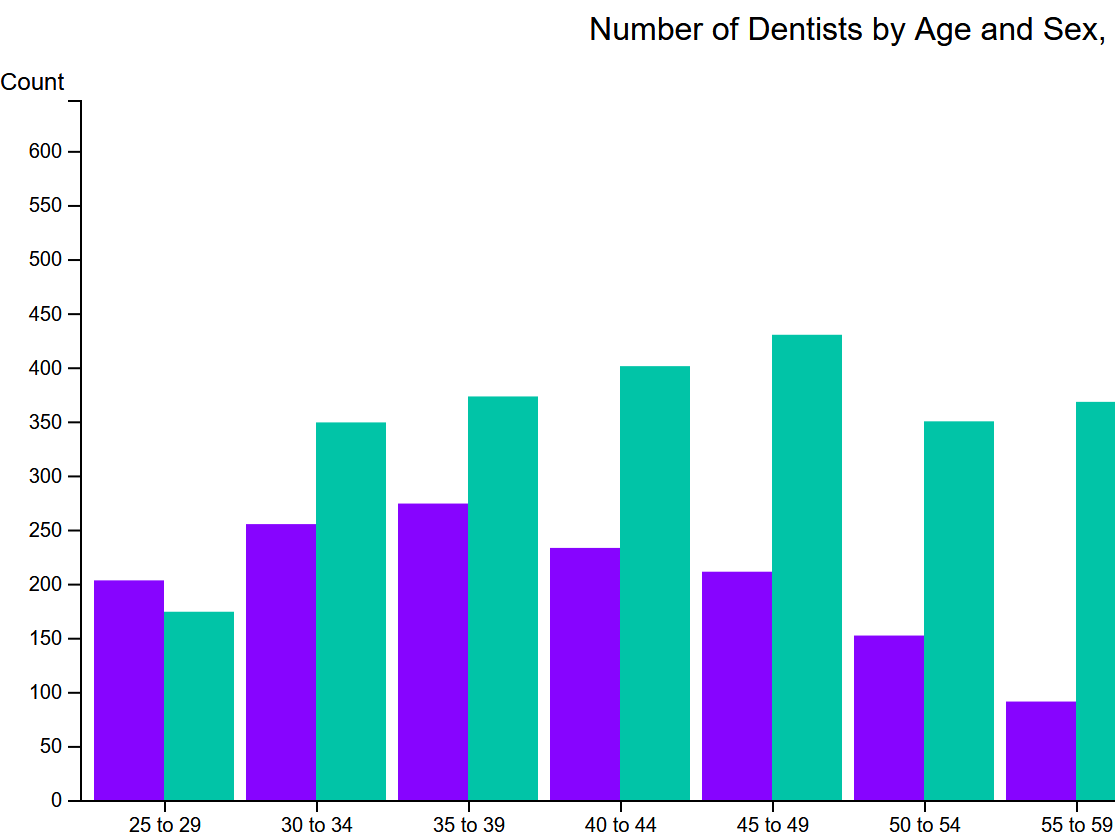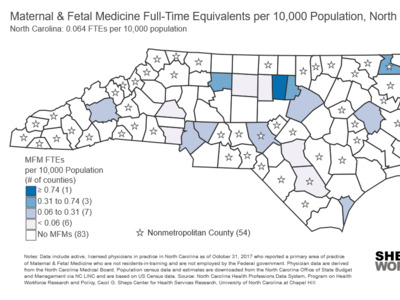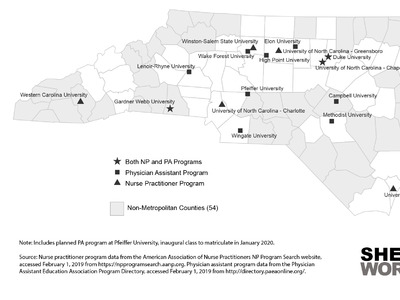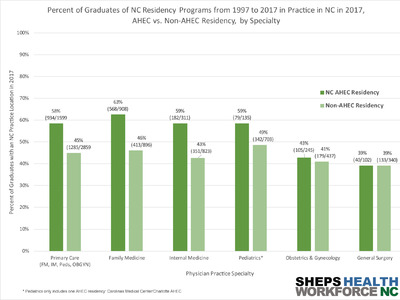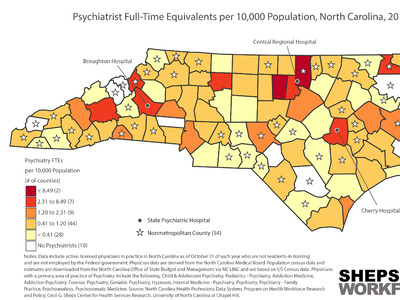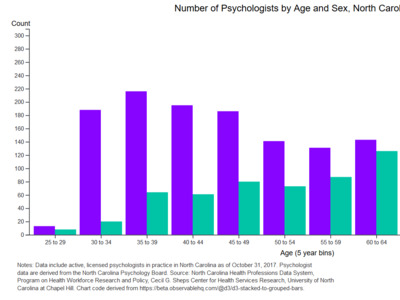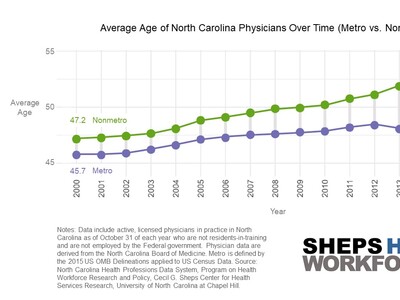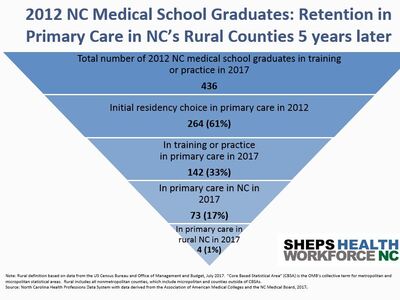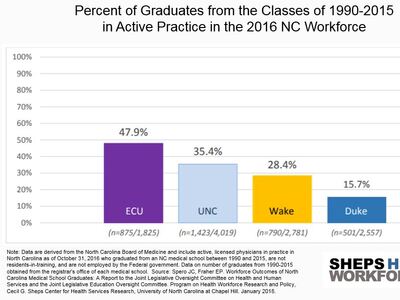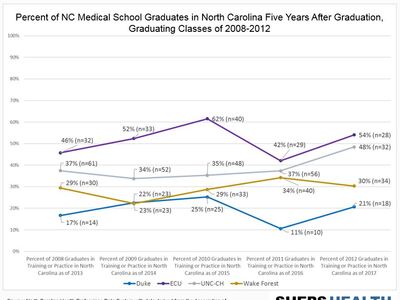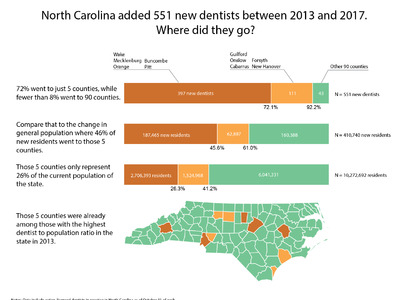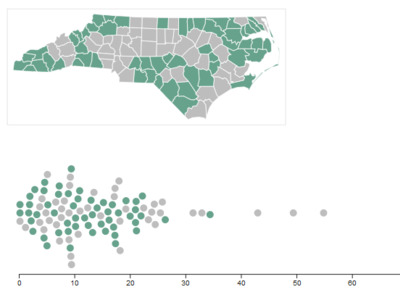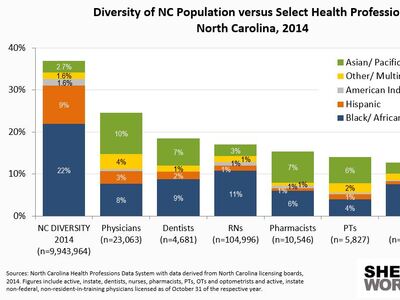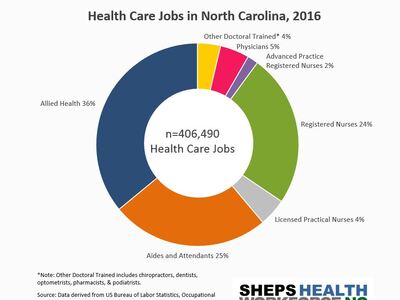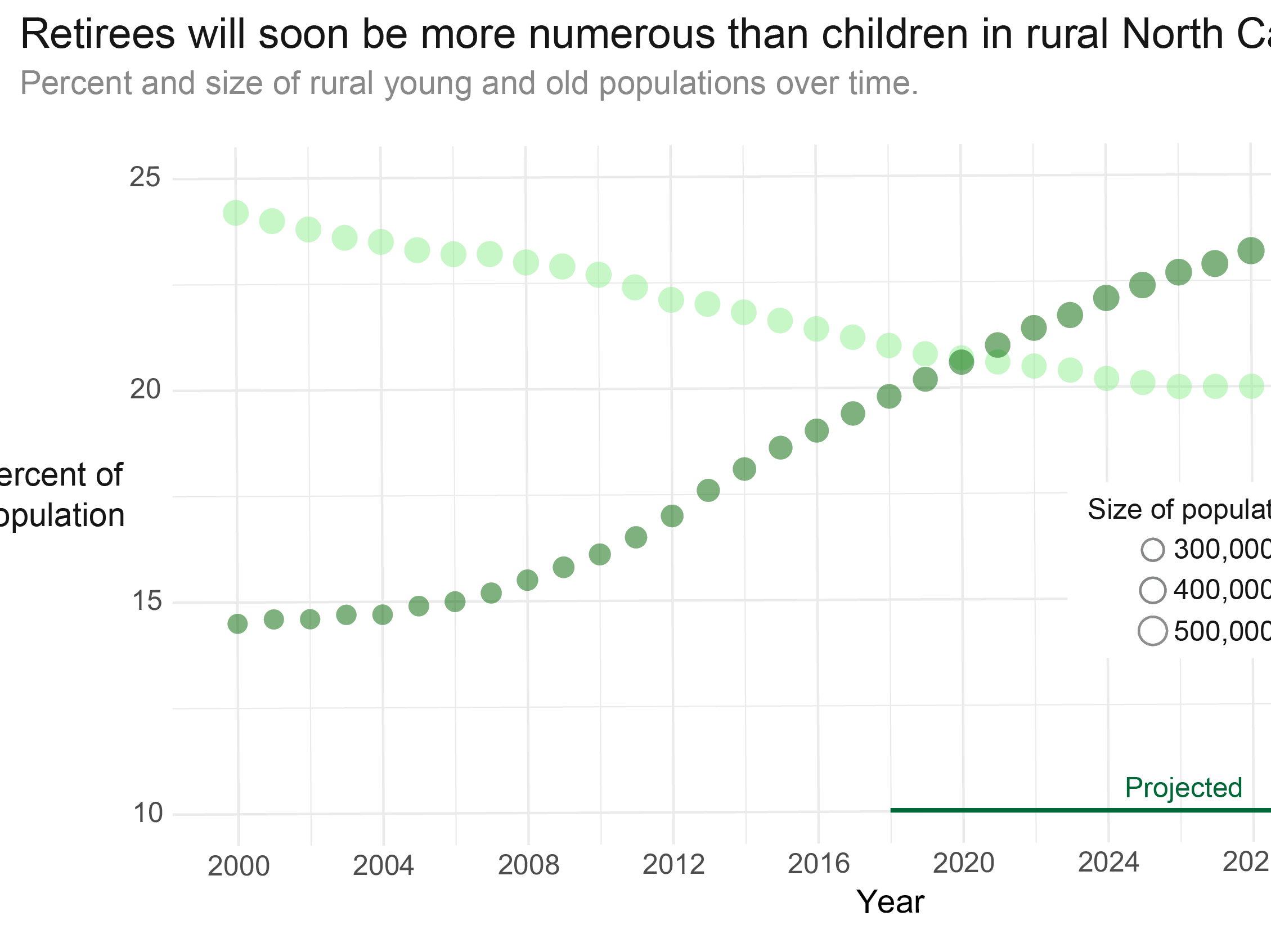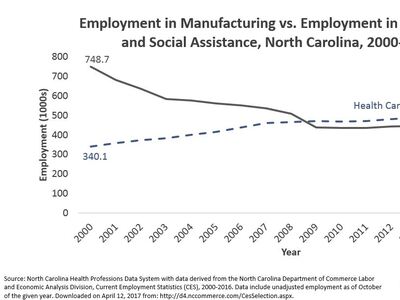North Carolina's Certified Nurse Midwife Workforce is Growing, but the Workforce Remains Maldistributed
By Brooke Lombardi, Connor Sullivan, Catherine Moore, and Erin Fraher
Jun 5, 2025
In 2023, section 4.3 of Senate Bill 20 / North Carolina (NC) Session Law 2023-14 (Care for Women, Children, and Families Act, 2023) removed the requirement for Certified Nurse Midwives (CNMs) to practice under the supervision of a physician if they meet specific criteria. Approval for independent practice requires at least 24 months and 4,000 hours of practice experience as a CNM. CNMs who have not yet met this requirement are required to work within a collaborative provider agreement with a provider. A collaborative provider may include: a) a NC-licensed physician who practices obstetric medicine with a minimum of four years and 8,000 hours of practice; or, b) a NC-licensed CNM with a minimum of four years and 8,000 hours of practice as a CNM.
This recent change to CNM regulation allows CNMs to practice independently and may expand access to maternal care services in NC. As such, it will be important to monitor how many CNMs practice independently and how this change in regulation impacts the geographic distribution of CNMs. Leveraging data from the North Carolina Health Professions Data System, this analysis provides data on the NC CNM workforce prior to implementation of SB 20 and approval of the pathway for CNM independent practice in NC. These data will provide a baseline from which changes to CNM supply and distribution in NC can be measured post-Session Law 2023-14 implementation.
Key Findings
- North Carolina’s CNM workforce increased 49% between 2013 and 2023, from 262 to 391 CNMs in active practice in the state (Figure 1).
- Among all counties in NC (N=100) in 2023, 41 counties had no CNMs, 28 counties had .01—0.4 CNMs per 10,000 population, 26 counties had 0.41—0.8 CNMs per 10,000 population, and 5 counties had 0.81—1.8 CNMs per 10,000 population (Figure 2).
- The percentage of the workforce practicing in nonmetropolitan NC counties declined from 17% (n=44) in 2013 to 13% (n=52) in 2023 (Figure 3).
- A higher percentage of CNMs who identified as underrepresented minoritiesa (URMs) in 2023 worked in nonmetropolitan areas (17.6%, n=9) compared to 15.1% (n=40) of non-underrepresented minority CNMs (Table 1), however this difference was not statistically significant.
These data are timely given recent changes to CNM regulation in NC. This pre-Session Law 2023-14 analysis of the NC CNM workforce provides an understanding of the CNM supply and distribution before the state implemented the independent practice pathway for CNMs. We will continue to monitor changes and provide an update in a forthcoming blog on whether:
- the state sees an increase in the overall supply of CNMs given the new pathway to independent practice;
- changes occur in the distribution of CNMs in non-metropolitan counties that could potentially increase access to maternal care services; and
- the settings in which CNMs practice (i.e. hospitals, birth centers, home settings) change
Figure 1. North Carolina Active Certified Nurse Midwife Growth per Year, 2013 – 2023

Figure 2. North Carolina Certified Nurse Midwives per 10,000 Population by County, 2023

Figure 3. Certified Nurse Midwives by Metropolitan Status, 2013 and 2023

Table 1. CNMs Identifying as Underrepresented Minority by Metropolitan and Non-metropolitan Practice Location, 2023
| Minority Status | Metro location n (%) | Non-metro location n (%) | Total n (%) |
|---|---|---|---|
| Non-minority | 224 (84.9) | 42 (82.4) | 266 (84.4) |
| Underrepresented Minoritya | 40 (15.1) | 9 (17.6) | 49 (15.6) |
| Total | 264 | 51 | 315 |
Note. a. Underrepresented minority: African American/Black, Hispanic, American Indian/Alaskan Native
Figure Notes: Data include active, licensed certified nurse midwives in practice in North Carolina as of October 31 of each year. Certified nurse midwife data are derived from the North Carolina Board of Nursing. Population census data and estimates are downloaded from the North Carolina Office of State Budget and Management via NC LINC and are based on US Census data. Source: North Carolina Health Professions Data System, Program on Health Workforce Research and Policy, Cecil G. Sheps Center for Health Services Research, University of North Carolina at Chapel Hill. Created October 21, 2024 at https://nchealthworkforce.unc.edu/interactive/supply/.



